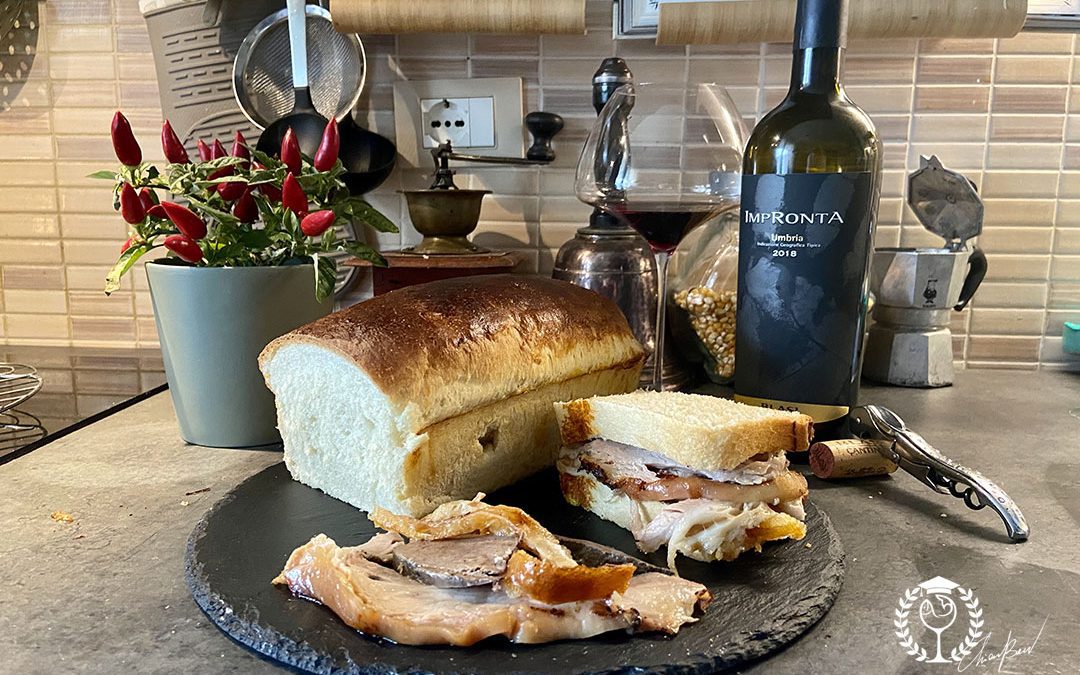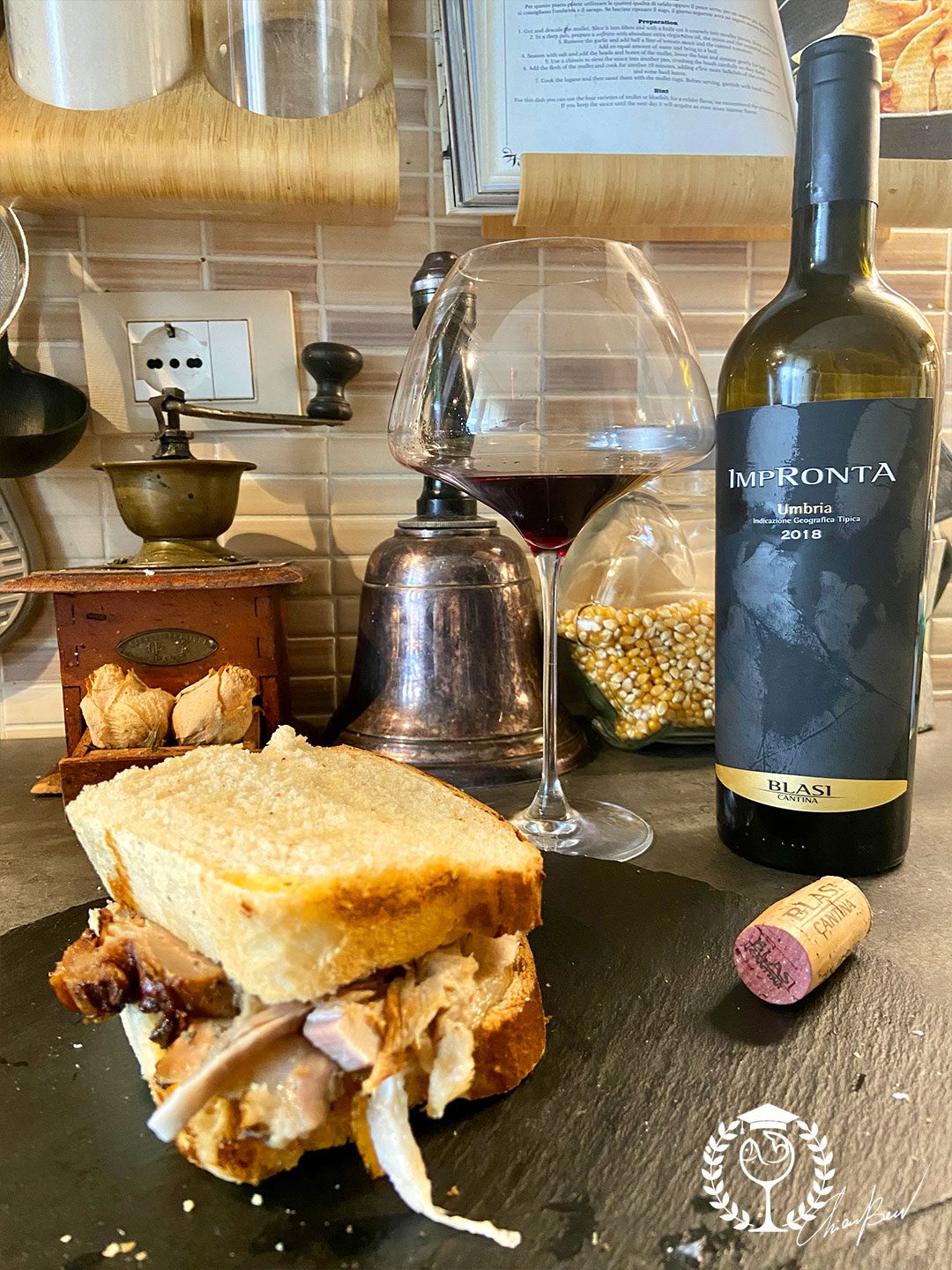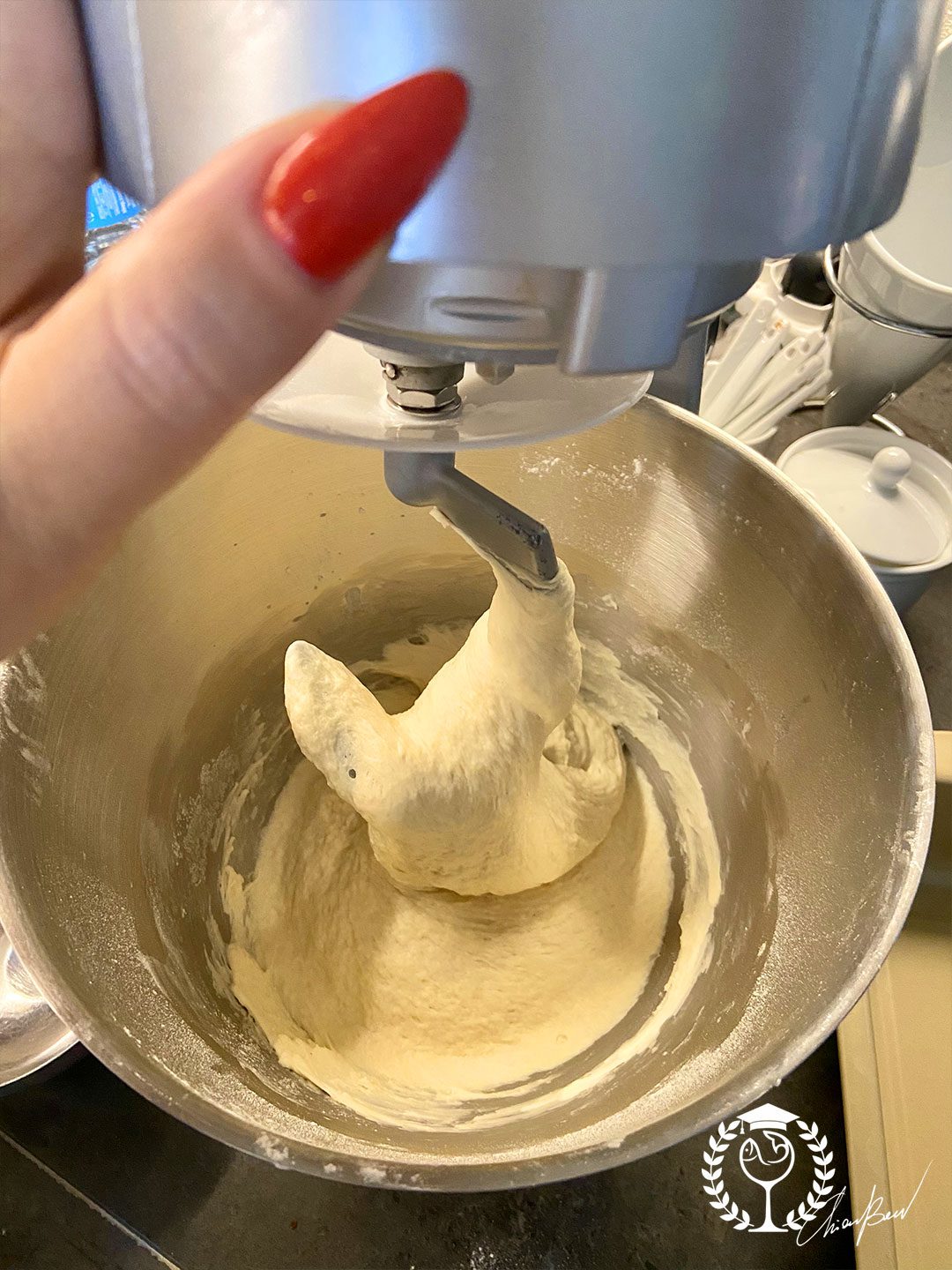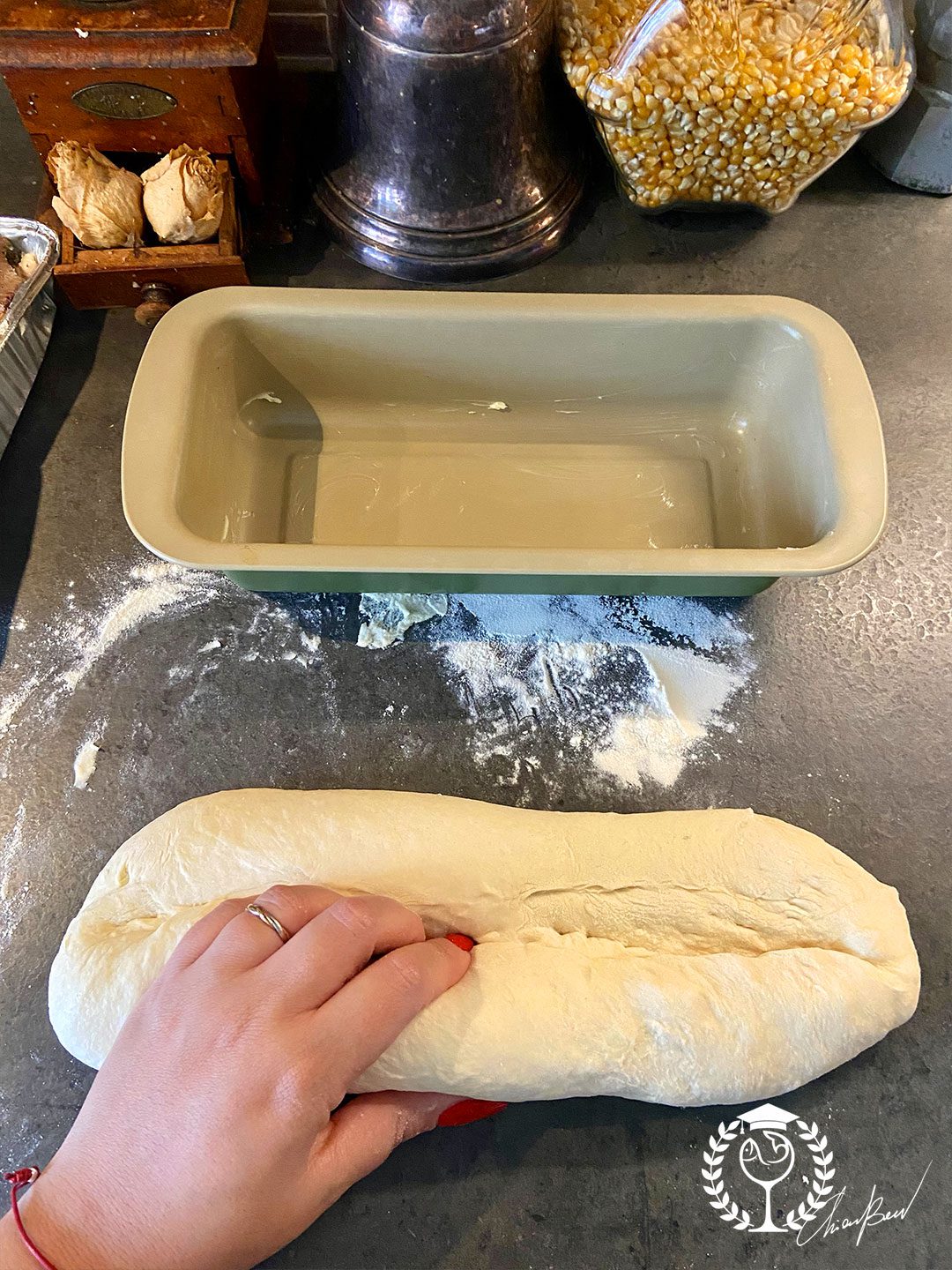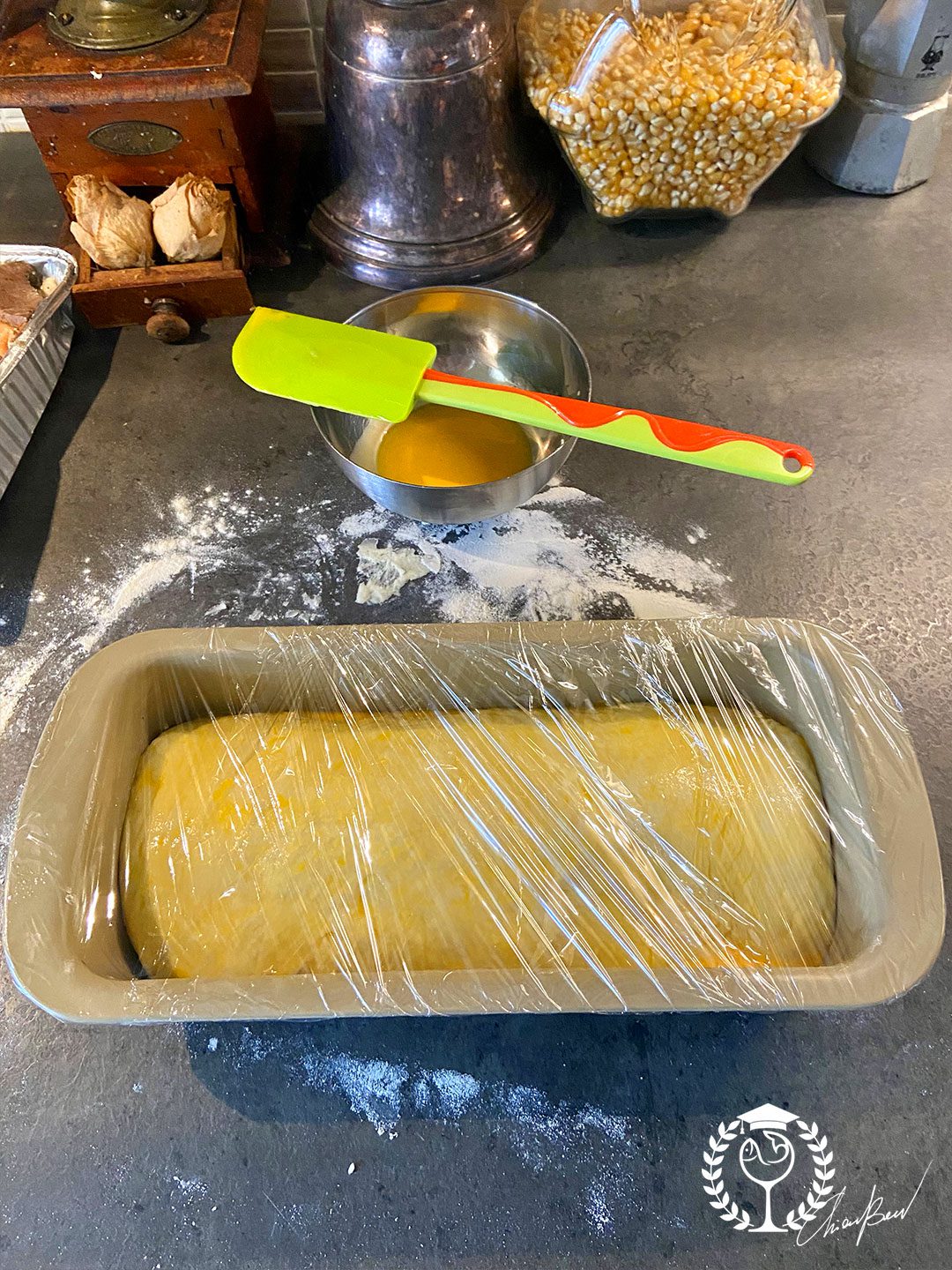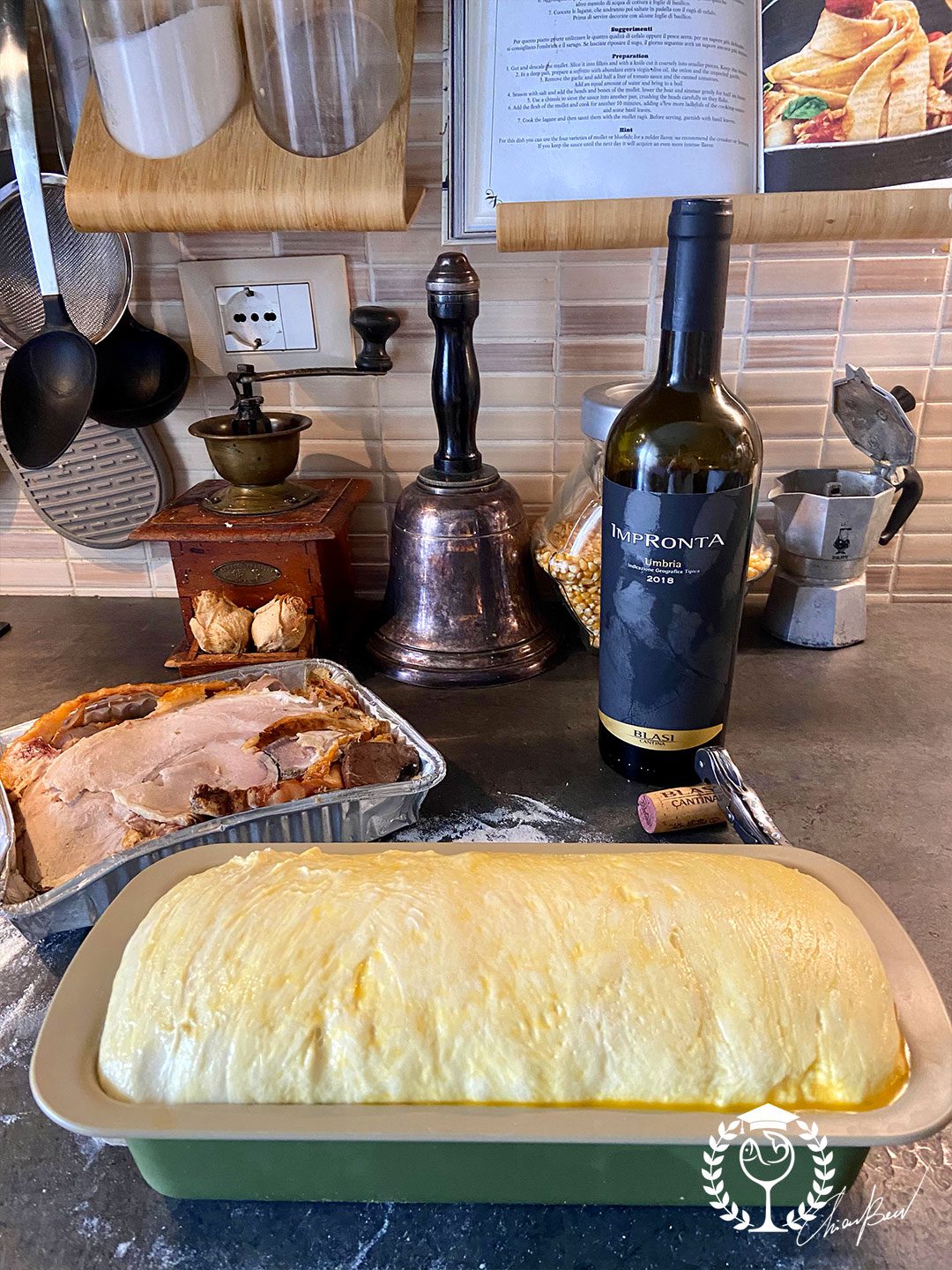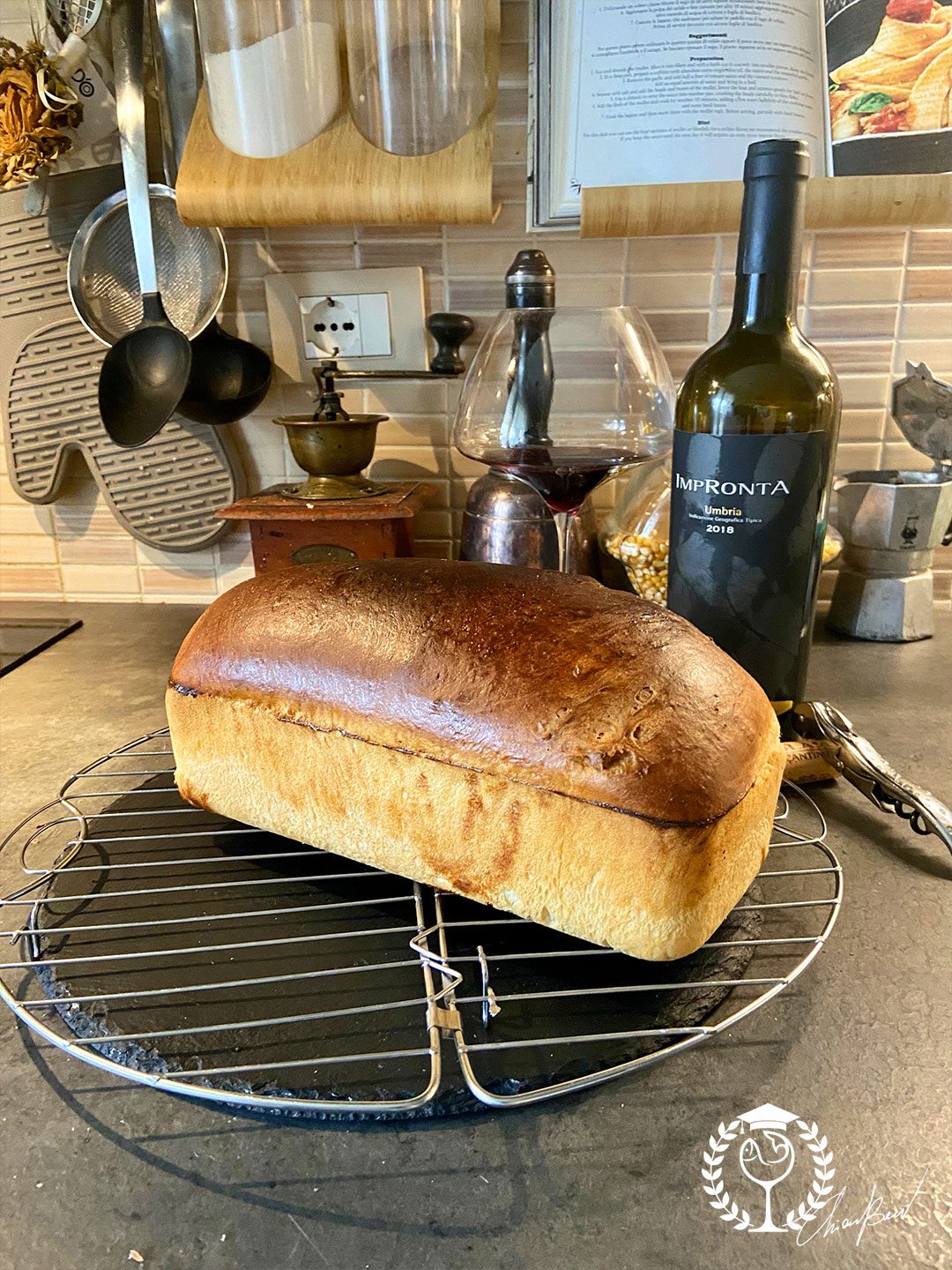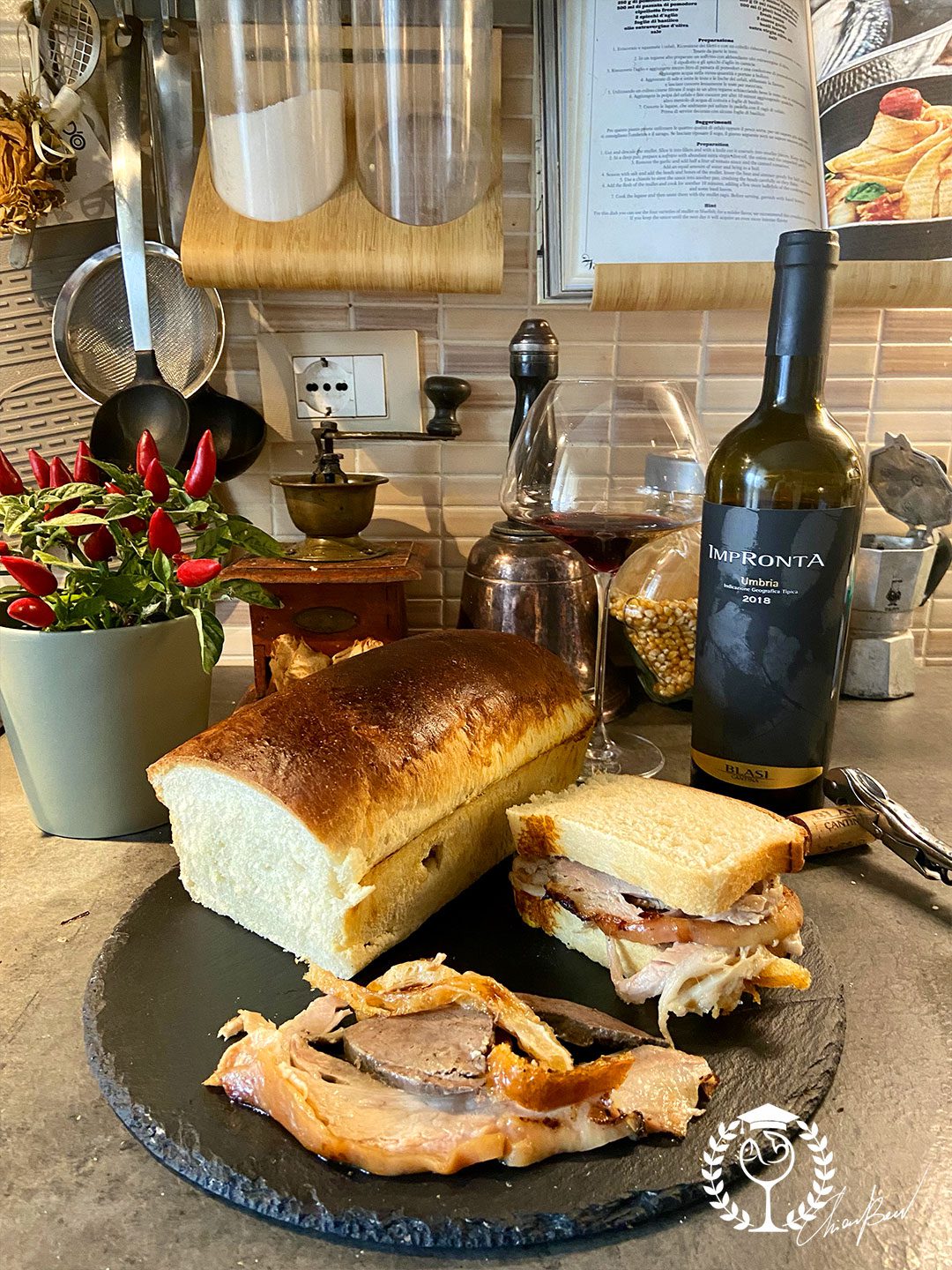An unexpected parcel I received from the Blasi Winery thanks to dear Maddalena Mazzeschi. A package that not only enticed me to visit this company as soon as possible because from the photos it looks really beautiful, but above all it inspired me one of those articles I like. After all, when you find a tub of Umbrian suckling pig wonderful and various Umbrian wineshow can you resist the temptation of a tasty stuffed sandwich? So I decided to share with you the recipe for my homemade cassette bread (or pan bauletto) and to create a perfect food-wine combination.
Porchetta is a typical preparation from Central Italyparticularly of Romagna, Tuscany, Marche, Umbria, Lazio and Abruzzo. Porchetta di Ariccia or Porchetta di Norcia? The diatribe of its birth is more alive than ever, I as a good native of Romagna-Tuscany might even dare to say that we invented it, but I would almost certainly be lying: the most accredited sources place its birth in Poggio Bustone in the province of Rieti. Porchetta is made from a one-year-old pig, preferably a female one, to appreciate leaner and tastier meat. Since it is very tasty because of the rich seasoning (spleen, liver, garlic and pepper, then, depending on the area, wild fennel or rosemary), it needs a red wine such as Impronta 2018 Umbria IGT by Cantina Blasi. Impronta is more than a name, it is a reminder of the desire to leave a mark of one's passage through the territory. Made from a bland of merlot, cabernet sauvignon and other indigenous Umbrian vines, it is aged for a long time first in barriques and then in bottles. But before tasting the wine... let's start by preparing the bread in a box!
Making bread at home is a great satisfaction. The soft, fragrant pan bauletto is perfect for those inexperienced in baking because it is a easy recipesuitable for everyone, even beginners. If you follow these steps faithfully and pay attention to weighing the ingredients correctly, I promise it will be perfect.
Pan bauletto Recipe: Ingredients
- 460 g flour 00
- 275 g lukewarm water
- 40 g butter (from centrifuged cream)
- 18 g caster sugar
- 10 g fine salt
- 7 g dry brewer's yeast (1 sachet)
For brushing:
- 1 yolk
- 3 tablespoons of milk
You can now subscribe to my newsletter or scroll down the page to continue reading the article! 😉
Let's start with the roast suckling pig
To prepare an excellent homemade pan bauletto, I recommend using akneading machine like this (it has already done me six years of honourable service), but you can also do it manually. First take the butter out of the fridge, then the pork and open the packet, leaving it in the aluminium tray. Open the red wine of your choice so that it can oxygenate. It takes about 2 hours to prepare the pan bauletto, so it is perfect to give the porchetta and the wine time to express their organoleptic qualities.
Cassette bread recipe in 8 steps
Step 1
Draw the water from the tap until it comes out lukewarm, weigh it out and put it in the bowl of the planetary mixer or the one you will use for kneading. Add the sugar and yeast and mix with a spoon until the yeast has dissolved in the water.
Step 2
Add half of the flour (so 230 g) and knead for 2-3 minutes (if you are using a mixer at speed 1). The dough will be very liquid, so if you knead by hand you can use a strong whisk.
Step 3
Add the butter and salt and knead for a couple of minutes, until it is blended.
Step 4
Add the remaining half of the flour one spoonful at a time until it is used up, continuing to knead. At the end of this process, if you have any stuck to the edges, stop the mixer and 'pull it down' with a fork to join it to the remaining dough. Continue kneading for 10 minutes (with the planetary mixer or manually) to allow the mesh of gluten to form. The dough is very soft and quite sticky and eventually looks like this picture.
Step 5
Wipe your worktop with a drop of vinegar and a paper towel so that there is no detergent residue or lint that might be on a cloth. Sprinkle a little flour over it. Take the dough with your hands and form it into a ball, then cover with a bowl and leave it to rise for 40 minutes.
Step 6
Take the dough and fold it into three parts to develop the gluten mesh even better. Butter the baking tin well without forgetting any corners, on all sides. Squash the dough to form a rectangle with a shape similar to that of the baking tray (I use a 25×11 cm non-stick plumcake mould like this one) in which you will do the second rising and then the baking. Fold half the dough over itself as in the photo below and then overlap the rest of the dough as if to form a roll. Sprinkle your hands with flour and form a cylinder.
Place the dough inside the baking tin, taking care to place the cut (or seal) facing downwards. In a small bowl, beat one egg yolk with 3 tablespoons of milk, then brush the surface to create a nice golden colour and a shiny crust when baking. Cover with cling film without stretching it too much, but still make sure it is well sealed. Let rise for 60 minutes.
Step 7
Turn on the static oven and preheat it to 200 °C. Remove the foil from the baking tray. Bake the bread in the middle shelf of the oven for about 30 minutes.
Step 8
Turn off the oven, take the bread out and enjoy the smell. Remove it from the baking tray and place it on a wire rack (I have been using this one for at least 10 years). foldable cake cooling grid because it stores in very little space and goes in the dishwasher) to let it dry. Wait 5/10 minutes for it to warm up so that the alveolatura can 'air out' (I know it's not the correct term, but this step is essential so that it doesn't stick).
In the oven while it is still hot, place the aluminium tray with the porchetta for the same time as you are waiting for the bread (5-10 minutes). This step serves to release the odorous molecules and cause the fatty part to melt slightly, giving the meat a soft, unctuous and melting sensation on the palate.
Now screw the goblet to remove any residual wash and dust. To screw it in, simply pour in a very small amount of wine and then rotate it almost holding it horizontally until you have passed almost the entire surface. I advise you to do this operation at the sink so that you do not soil around. Now we are ready to taste together.
Umbria IGT wine 'Impronte' 2018 by Cantina Blasi
It is a beautiful intense ruby red with garnet hues at the edges. On swirling the glass it forms close bows in which the wine flows slowly, consistently. The nose is delicate, complex, fine and elegant with notes of black pepper, burning wood, smoked, cinchona, rhubarb and cherries in spirit. In the mouth it is enveloping, soft, with tannin present, lots of structure and a long finish of freshly ground coffee. Puon potential for evolution in the bottle, to be left in the cellar at least 4-5 years to enjoy it at the peak of its tasting curve.
A lunch I would call a Eulogy to simplicity: cassette bread, home-made porchetta and red wine. Yet, among the many sophistries that contemporary society somehow imposes on us, this is not just a true comfort food, but rather a cultural revolution. The stuffed sandwich, let's call it a stuffed sandwich because we put so much pork on it, is a moment we take to dive into childhood memories, between school desks or afternoons in the park with friends. Likewise, it is present in today's life, in a lunch break at work or in a packed lunch during an outdoor excursion. The stuffed sandwich calls for only the finest ingredients and, if accompanied by a good glass of wine, invites you, bite after bite, to enjoy those everyday moments that we too often take for granted but can still be beautiful.
We will think about sophisticated cuisine tomorrow.
Cheers 🍷
Chiara

